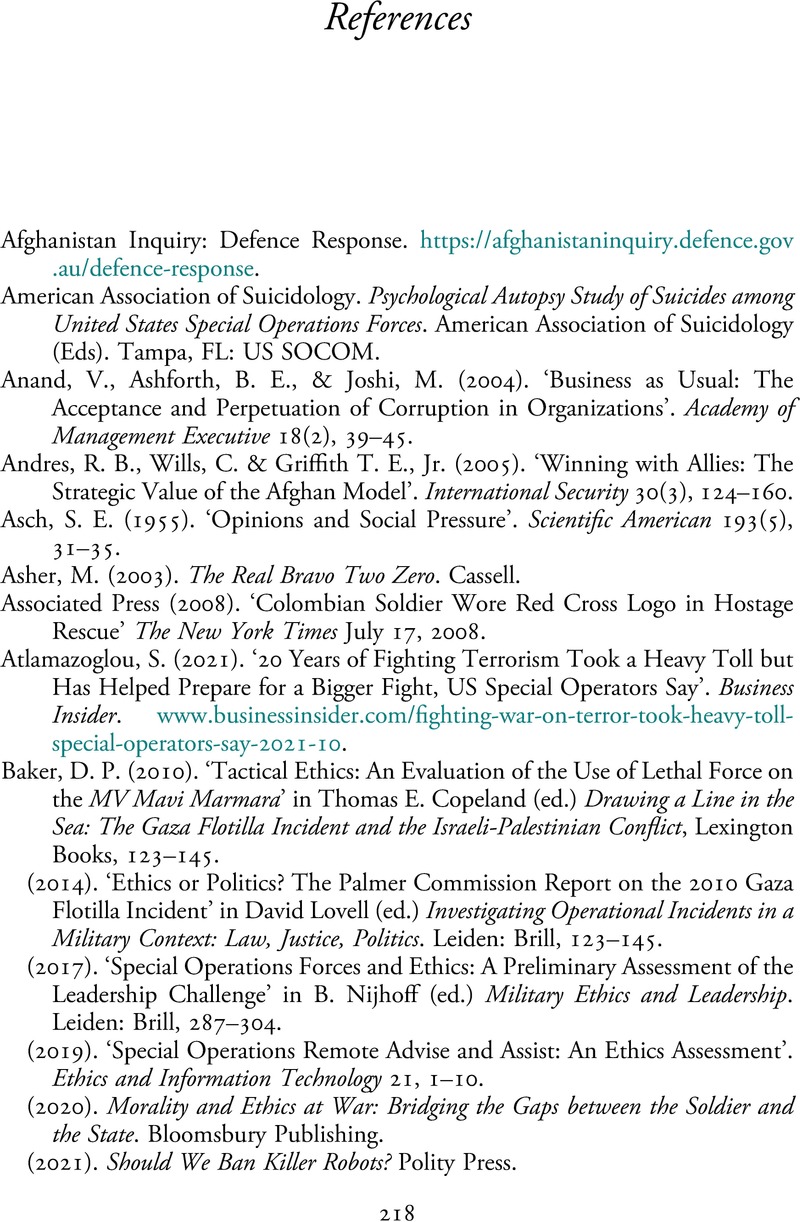Book contents
- The Ethics of Special Ops
- The Ethics of Special Ops
- Copyright page
- Contents
- Foreword
- Acknowledgements
- Abbreviations
- Chapter 1 Introduction
- Chapter 2 Raids
- Chapter 3 Recoveries
- Chapter 4 Reconnaissance
- Chapter 5 Rebels
- Chapter 6 Not Quite War
- Chapter 7 Ethical Armouring for Special Operations Forces
- References
- Index
- References
References
Published online by Cambridge University Press: 16 November 2023
- The Ethics of Special Ops
- The Ethics of Special Ops
- Copyright page
- Contents
- Foreword
- Acknowledgements
- Abbreviations
- Chapter 1 Introduction
- Chapter 2 Raids
- Chapter 3 Recoveries
- Chapter 4 Reconnaissance
- Chapter 5 Rebels
- Chapter 6 Not Quite War
- Chapter 7 Ethical Armouring for Special Operations Forces
- References
- Index
- References
Summary

- Type
- Chapter
- Information
- The Ethics of Special OpsRaids, Recoveries, Reconnaissance, and Rebels, pp. 218 - 230Publisher: Cambridge University PressPrint publication year: 2023



